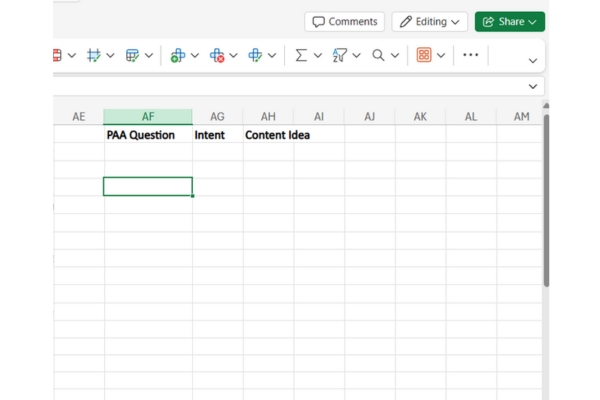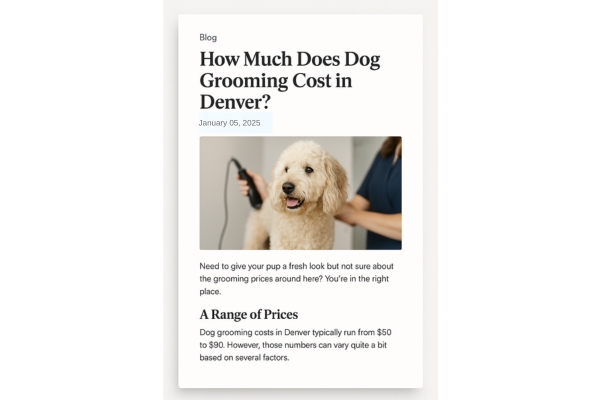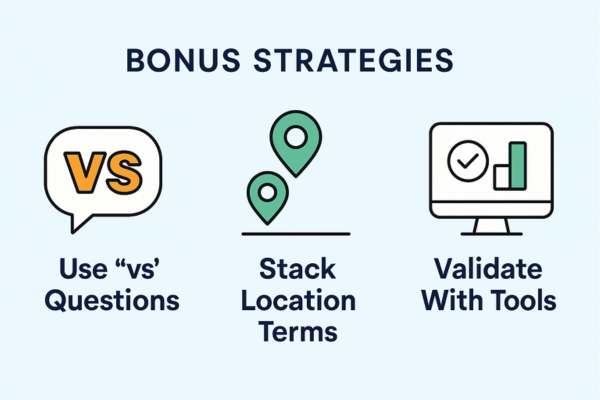If you’ve ever typed something into Google and found yourself spiraling down a rabbit hole of related questions like “What is local SEO?” or “How do I get found on Google Maps?”, you’ve already met Google’s People Also Ask (PAA) box—that expandable section full of questions real people are asking.
But what if I told you those questions aren’t just helpful for searchers… they’re goldmines for content ideas—especially if you’re trying to boost your local business visibility?
Why does this matter for local SEO?
- These questions are based on real user searches.
- They show you exactly what your audience wants to know.
- They update constantly—so your ideas stay fresh and relevant.
- It’s basically free market research, straight from Google.
In this guide, we’ll walk through how you can use Google’s People Also Ask to come up with content that ranks, connects, and converts. Whether you’re a business owner, a marketer, or just thinking of starting your own blog, this one’s for you.
Why Use PAA for Local SEO Content?
Local SEO isn’t just about optimizing your Google Business Profile (though that’s important!). It’s about creating content that speaks to people in your area who are actively looking for your product or service.
Using the PAA section helps you:
- Find location-specific questions your audience is asking.
- Understand what info Google favors in featured snippets.
- Generate content ideas that align with search intent.
If you’re stuck thinking, “What the heck should I post next?”—PAA has your back.
Step-by-Step: How to Use “People Also Ask” for Local Content
Let’s keep this beginner-friendly.

Step 1: Search a Local Keyword Phrase Like a Customer Would
Put yourself in your customer’s shoes. What would they search for?
If you’re a dog groomer in Denver, type into Google: dog grooming Denver
Now, don’t skip past the first few results. Instead, scroll until you find the People Also Ask box. This is usually 2–4 results down.
These boxes are different depending on what you search and even your location—so your results are personalized and fresh.
Example Questions You Might See:
- “How much is dog grooming in Denver?”
- “Is PetSmart grooming good?”
- “Do I need to make an appointment for dog grooming?”
These aren’t just random questions—these are questions your actual customers are asking Google right now.
Step 2: Expand the Box and Trigger More Questions
Click on one question—and more will appear.
The more you click, the deeper the list grows. Every question added gives you a peek into how people think, shop, and compare options online.
Why this matters: You’re not just collecting questions—you’re mapping how your potential customers think, compare, and decide.
Example:
Clicking “Is dog grooming worth it?” might lead to:
- “What are the benefits of professional dog grooming?”
- “Can I groom my dog at home?”
And now you’ve got a whole theme for a new blog series.
Step 3: Organize Your Findings in a Simple Spreadsheet

No fancy software needed—just open a spreadsheet, Notion, or even a Google Doc and start copying questions.
Here’s a format you can use:
| PAA Question | Search Intent | Content Idea |
| How much is dog grooming in Denver? | Informational | Blog: “How Much Does Dog Grooming Cost in Denver?” |
| Is it worth getting your dog professionally groomed? | Comparison | Blog: “DIY vs Professional Grooming: Which Saves You More?” |
| Can I bathe my dog without grooming? | Quick Answer / Tips | Blog: “5 Grooming Tasks You Can Do at Home (And When to Call a Pro)” |
Search Intent categories you can use:
- Informational (they want to learn)
- Navigational (they’re looking for a location or site)
- Transactional (they’re ready to buy)
- Comparison (they’re choosing between options)
Step 4: Create Blog Posts or Service Pages That Answer the Questions

Here’s where the gold is. Take those questions and answer them better than anyone else on the first page of Google.
Make your content:
- Clear: Avoid jargon or long blocks of text
- Conversational: Write like you’re explaining it to a friend
- Local: Mention your city or neighborhood naturally
- Helpful: Answer the question directly and add extras (tips, FAQs, visuals)
Example:
Instead of just writing “Dog Grooming Prices in Denver,” give them:
- A range of prices
- What affects the cost
- How to save
- What to look for in a groomer
- Why your service stands out locally
If you’re using GoHighLevel (GHL), you can automate publishing, build funnels from blog pages, or connect to lead forms with ease. Not using GHL? These strategies still apply.
Step 5: Repurpose Your Content So It Reaches More People

Don’t let your awesome blog post collect dust. One topic can be reused and reshared in multiple ways:
Instagram:
Turn your blog intro into a Reel or carousel post:
“Here’s what most dog parents in Denver don’t know about grooming costs…”
Facebook:
Share the link in neighborhood groups or your business page with a hook:
“We just wrote a quick breakdown on grooming costs in Denver—perfect for new dog owners!”
Pinterest:
Make a graphic and pin it. Use text overlays like:
“Dog Grooming Prices in Denver – What You Should Know”
Email:
Send a teaser like:
“Confused about grooming prices? We broke it down in under 3 minutes.”
Link to the full post.
Bonus Tips to Maximize the PAA Strategy

Here are a few pro moves that take things up a notch (still beginner-friendly):
Use “vs” Questions
People love comparison searches. Ex:
- “Dog grooming at home vs salon”
- “Local SEO vs Paid Ads for Small Businesses”
These are prime for high-ranking listicles or pros/cons articles.
Stack Local Terms
Try this method:
- “Best [service] in [your town]”
- “Affordable [product] near me”
- “How to choose a [service provider] in [city]”
Watch PAA fill in the rest.
Validate With Search Tools
If you want to double-check that a question is worth writing about, plug it into:
You’ll get search volume, keyword difficulty, and more—perfect if you’re ready to take things to the next level.\
Real-Life Example: The Local Coffee Shop Owner
Let’s say you own a coffee shop in Portland.
Search: best coffee shop Portland
You’ll see:
- “What coffee is Portland known for?”
- “Why are there so many coffee shops in Portland?”
- “What’s the most popular coffee shop in Portland?”
That’s not just trivia—it’s content potential:
- A blog: “Why Portland Is Obsessed With Coffee”
- An FAQ: “What Makes Our Beans Different?”
- An About Page update with local flair
Your Turn to Try It
Think about one question you always hear from your customers.
Go to Google.
Type it in.
Click around the People Also Ask section and see what else pops up.
Choose one question.
Write about it.
Share it with your local audience.
It’s that simple. Start small, stay helpful—and your content will start working for you.
Final Thoughts on Using People Also Ask for Local SEO
Using Google’s People Also Ask feature is one of the easiest, most effective ways to uncover content ideas that actually matter to your audience—especially when you’re focused on local SEO.
It doesn’t require expensive tools or technical skills—just curiosity, a few clicks, and a desire to serve your local audience better.
Whether you’re a local business owner, freelancer, or just starting your blog—this strategy gives you a steady stream of content ideas that help you build visibility, trust, and traffic over time.
Frequently Asked Questions

Yes—it’s one of the simplest ways to create content based on real local search behavior. It helps your site appear for relevant queries and builds topical authority.
If the topic is detailed, a standalone page is better. For quick answers, grouping them into a single FAQ page works fine.
Search your main keyword + location on Google and expand the People Also Ask box. You can also use free tools like AlsoAsked or AnswerThePublic for more ideas.
FAQ schema helps Google understand your content and may earn you rich results. It doesn’t guarantee PAA placement but can support it.
Try updating every 3–6 months to stay current. This keeps your content aligned with changing search trends.
Yes—just add PAA-style questions to your service pages or FAQs. You don’t need a full blog to benefit from this tactic.



